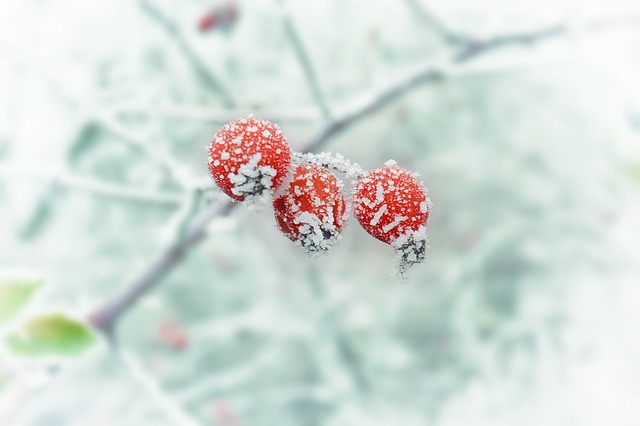Fall/Winter Garden Color for Long Island and the Northeast
Did you know that even during winter northeastern gardens can be full of color and interest? Have you spied any of the gorgeous berries blossoming right now around Long Island?
For example, Callicarpa bodinieri, aka “Beautyberry,” is one of Mother Nature’s delights that thrive locally and is offering lovely color right now (see large feature image above). This ‘beauty’ not only makes a sublime colorful statement in fall, but the berries remain through winter.
To obtain a comprehensive list of what will lift winter doldrums with outdoor color and texture, Deck and Patio spoke with Sandra Vutaggio, Horticulture Consultant at the Cornell Cooperative Extension in Riverhead, NY. She shared a substantial list of choices that will provide either bark interest, colorful berries/seedheads, late-season foliage, flowers or evergreen (see list below).
Some of the listed flora actually fit under multiple categories: Skimmia, for example, offers crimson-red berry interest in fall and winter, and also bright white flowers in spring.
“Deciduous plants like Oakleaf Hydrangea have late season foliage and later offer nice bark in winter,” says Vutaggio.
“All on the list grow well in the northeast, although some can be a little fussy. The Skimmia are an example of those that are a little temperamental and harder to grow. Camellias, which thrive much further south, can be marginally hardy, if planted in a good protected spot where they will get a wind break; then they’ll do fine on Long Island.”
Vutaggio adds that any winter interest in the garden should include some evergreens because they will be the backdrop to anything else that you plant.
Other Tips from Vutaggio:
For perennials — e.g., Hellebore (listed under Flowers) and Rudbeckia (under Seeds): if instead of cutting them down you leave them planted, they provide interest amid snow; the Rudbeckia will provide seed heads which will draw birds to them during winter.
You can still get perennials into the ground right now, but for the larger trees and shrubs, you should wait until early spring until the ground is workable to give them time to grow roots and adjust to your property.
Trees like the Crepe Myrtle, which offer beautiful pink spring flowers and, in fall, finish flowering when the leaves pod up into pretty berries, also provide interesting bark color in winter. More on Crepe Myrtle: https://deckandpatio.com/for-fiery-fall-foliage-are-you-barking-up-the-right-trees/
Evergreens of all shapes, sizes and variegation add winter interest. Many junipers turn a bronze/purple in the winter as well. Just google the names on the following list to discover all the wonderful options available for winter color and interest.
The beautiful purple berries of the Callicarpa begin in fall and last through winter. Photo: Missouri Botanical Garden
Thriving on Long Island and the northeast, the Crepe Myrtle brings delicate clusters of pink blossoms in late spring (shown behind waterfall); in fall, it offers bright red-orange leaves and in winter interesting bark. Photo: With Permission: Southern Lagniappe)
These evergreen shrubs sport bright green leaves and, in spring, bring vibrant white flowers; in fall, they offer up crimson red fruits (berries) that last all through winter and are especially fine in December. In fact, they make great Christmas or Thanksgiving hostess gifts as they are slow growers that are ideal starting out in pots and containers. Photo Credit: Musical Linguist at the English language Wikipedia





